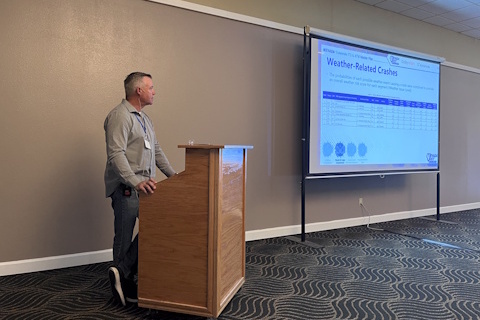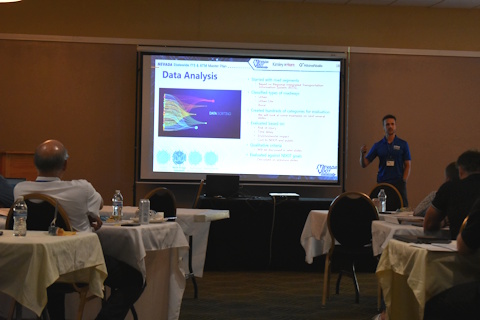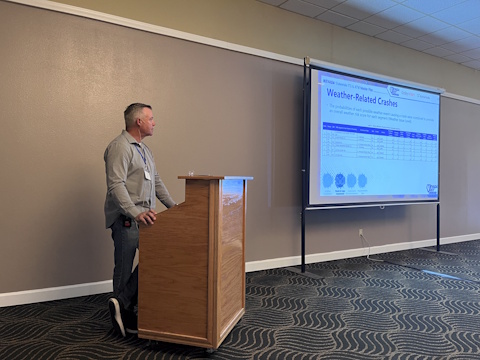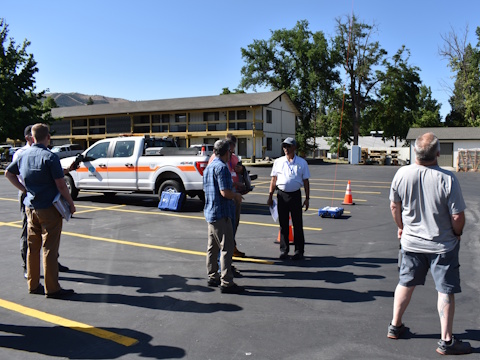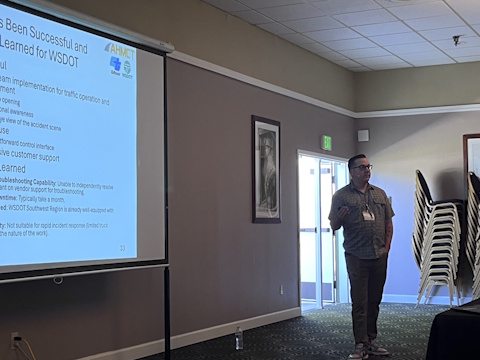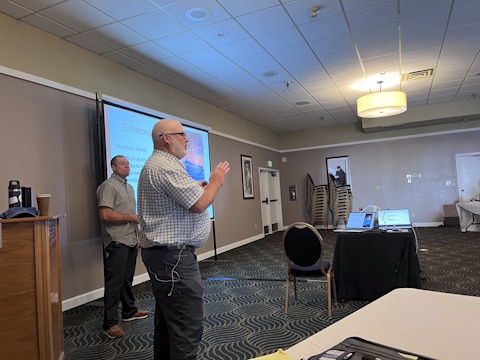
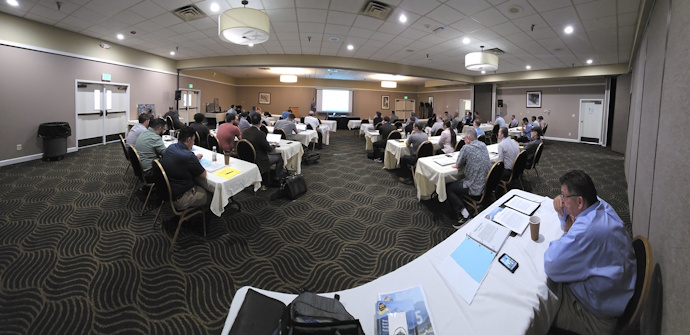
SCHEDULE OF EVENTS
Monday, June 16, 20254:00 pm to 7:00 pm Registration
5:00 pm to 6:30 pm Reception (no-host)
6:30 pm to 9:00 pm Dinner
Tuesday, June 17, 2025
7:00 am to 8:00 am Breakfast
8:00 am to 11:55 am Welcome and Technical Presentations
11:55 am to 1:30 pm Lunch and Founders Panel
1:30 pm to 5:00 pm Technical Presentations, Evaluations, Remarks
5:45 pm to 11:00 pm Dinner and Networking Session at Upper Greenhorn Park, Yreka
Wednesday, June 18, 2025
7:00 am to 8:00 am Breakfast
8:00 am to 11:40 am Technical Presentations
11:40 am to 12:10 pm Speaker and Attendee Recognition
12:10 pm to 12:30 pm Concluding Remarks and Evaluations
12:30 pm to End Lunch and Celebration
Pikalert: NSF-NCAR's Road Weather Hazard Prediction System (pdf)
Tom Brummet
National Center for Atmospheric Research (NCAR)
Tom Brummet, National Center for Atmospheric Research (NCAR)
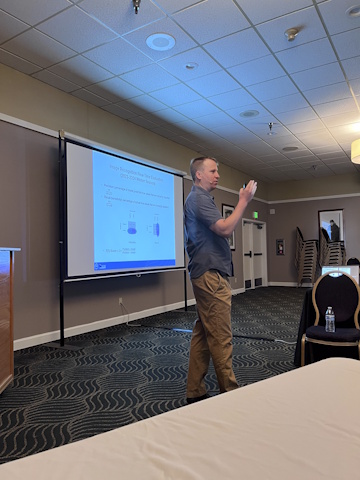
Photo by Leann Koon
Montana Transportation Management Center (TMC) (pdf)
Curtis Buckley
Montana Department of Transportation
Curtis Buckley, Montana Department of Transportation
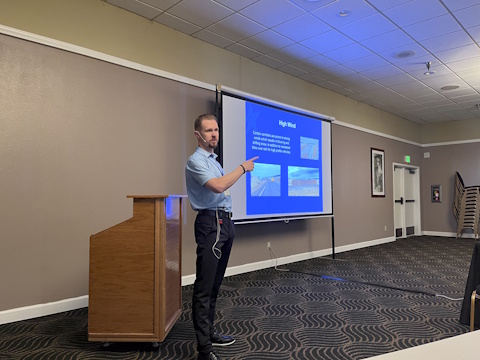
Photo by Leann Koon
Developing The Plan – Integration of ITS into Mobility Plans
Nevada Statewide ITS & ATM Master Plan (pdf)
Jordan James, Kevin Maxwell
Nevada Department of Transportation
Evaluation and Application of Fotokite Tethered Drones in Rural Areas of California and Washington (pdf)
Anh Duong, AHMCT Research Center, University of California, Davis
Paul M. Yamashita, Caltrans District 6
Michael Southwick, Washington State DOT
Note: A version with the embedded video clips is available here. The file is ~56 MB in size. To view the videos, you may want to download and access the file locally and be sure to use more recent versions of Adobe Reader.
Anh Duong, AHMCT Research Center, University of California, Davis
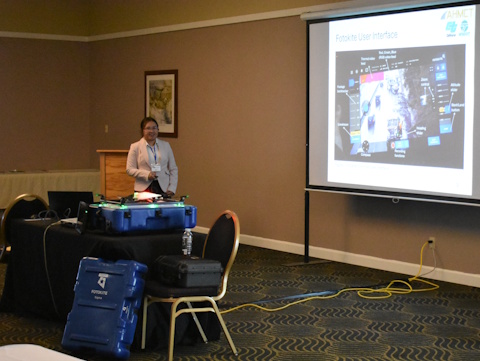
Photo by Doug Galarus
Wyoming Roadside Network and Backhaul Upgrade (pdf)
Keith Tupper, Steve Nickles
Wyoming Department of Transportation
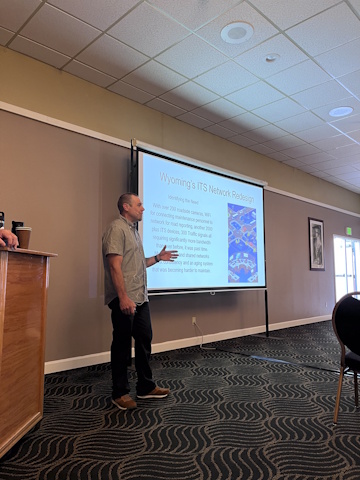
|
Keith Tupper and Steve Nickles from the Wyoming Department of Transportation discussed the redesign of Wyoming’s ITS communication network. With a nod to a 2009 presentation by WyDOT’s Paul Anderson (Creation of an Ethernet/IP Backbone System for Wyoming’s Department of Transportation), Keith and Steve started with background on the existing network, shortcomings associated with it, and the costs in both time and money to keep it running. They reviewed some of the innovations between then and now that have supported the network redesign. They then dove into the new network plan, the redesign process, incorporating redundancy, pilot projects and techniques for network security and isolation. Keith and Steve passed around several different radios for the group to examine and concluded with discussion on lessons learned and next steps. |
Graffiti Detection & Drones (pdf)
Michael Gauger, Kelvin Daratha
Washington State Department of Transportation
Michael Gauger, Washington State Department of Transportation
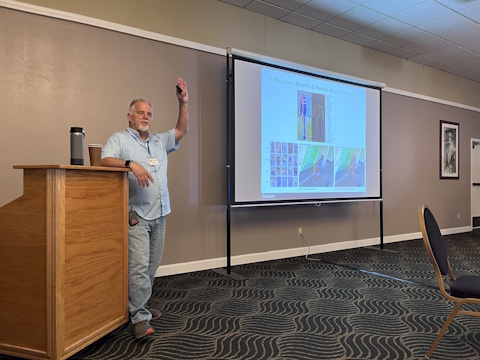
Photo by Leann Koon
Kelvin Daratha, Washington State Department of Transportation
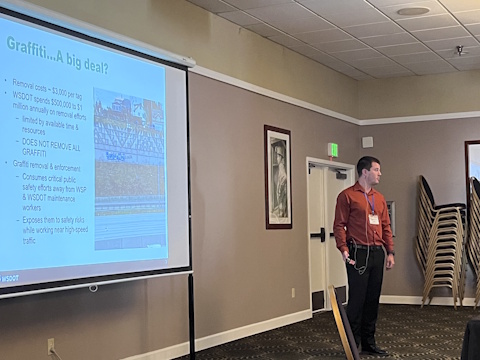
Photo by Leann Koon
Sean Campbell & Ian Turnbull
WSF Founders, Past Steering Committee Members
Caltrans, Retired
The Panel was moderated by Steering Committee Member Doug Galarus, Montana Tech.
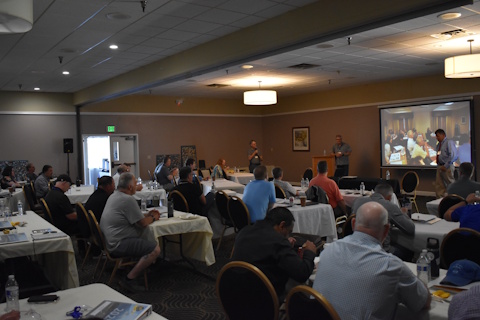

In recognition of the 20th Anniversary of the Western States Forum, we assembled a panel of WSF founders to discuss the who, what, where, when and why of this unique event. Rural ITS is, was and will continue to be the frontier of Intelligent Transportation. Sean Campbell and Ian Turnbull, two of the Forum’s founders and retired Caltrans engineers, discussed why “Accurate, Timely, and Reliable” is the measuring stick for performance in this environment, along with other key insight into the state of the practice. The panel was moderated by Doug Galarus, Associate Professor at Montana Tech, who has attended every Forum and been a Steering Committee member from the beginning. Ian and Sean explained the story behind the Forum’s origin and the need for a meeting that allowed speakers (ITS implementers) to get into the nitty gritty details of how things work or don’t work. They commented on the value of frank and transparent discussions, in person networking opportunities, and a vendor free audience. Ian and Sean spoke to being able to try things out in rural environments with limited resources and infrastructure – if it works in the rural context, implementation in areas with more resources and infrastructure (i.e., urban locations with better communications) could be more easily accomplished. They advised perseverance and being able to “work with what you’ve got” to carry the field of Rural ITS for the next 20 years.
TOP


